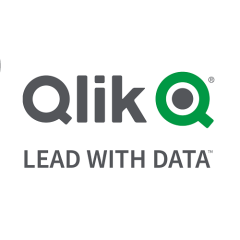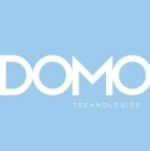
BI Expert with 51-200 employees
A powerful user-friendly BI tool with an amazing graphic interface but security is difficult and slow to implement.
What is most valuable?
The graphic interface is amazing, it is also very user-friendly and easy for developers to iterate, modify and evolve it. Due to its "in memory" nature it is very fast and powerful.
How has it helped my organization?
It is a very easy-to-sell product. The value added is huge and the ROI is very high since the projects are done relatively fast.
What needs improvement?
Implement security model for a document can be difficult and slow to implement.
For how long have I used the solution?
3 Years
Buyer's Guide
QlikView
September 2025
Learn what your peers think about QlikView. Get advice and tips from experienced pros sharing their opinions. Updated: September 2025.
869,832 professionals have used our research since 2012.
How are customer service and support?
Customer Service: Direct Communication, usually quick responsesTechnical Support: 9/10
Which solution did I use previously and why did I switch?
I have worked basically with CPM tools so this is my first BI tool.
How was the initial setup?
It is very easy to install Qlikview. The important part is to size correctly the servers according to the size of the application and the number of users.
Which other solutions did I evaluate?
In my company we work with many BI tools from different vendors, from SAP and Oracle to Pentaho and Qlikview.
What other advice do I have?
What I have seen is that it's addictive for the users. So if you are an IT manager and you are planning to use another BI tool, try not to show Qlikview to the users or they won´t let you change.
Disclosure: My company does not have a business relationship with this vendor other than being a customer.
BI Expert at a consultancy with 10,001+ employees
Works well when you have the right hardware to support it.
QlikView is a powerful visualization and data discovery tool, and works well when you have the right hardware to support it. I've seen the users getting excited about the tool, and the usage ever expanding in most places, provided the KPIs available are relevant.
The tool offers much more capability than simple dashboarding - the natve qvd file formats are excellent if you want to do lots of data cleansing and massaging. Due to this reason, clients can avoid having a separate database license for DWH (please note that QV is not a full fledged DWH, though it supports the most wanted functionalities).
QlikView works out to be the best cost effective when the number of users vary between 50 to 250. Users above or below may have its impact on the pricing per user.
In a nutshell, it is a great product to create leadership dashboards setup for any organization size.
Disclosure: My company does not have a business relationship with this vendor other than being a customer.
Buyer's Guide
QlikView
September 2025
Learn what your peers think about QlikView. Get advice and tips from experienced pros sharing their opinions. Updated: September 2025.
869,832 professionals have used our research since 2012.
Consultant at a tech consulting company with 51-200 employees
Excellent product (if RAM intensive) that is easy to use and delivers on its promises.
What is most valuable?
Ease of development. Data Discovery and Analytics
How has it helped my organization?
Great insight into our data and aides both business explanations and data analysis.
What needs improvement?
Collaboration. Data Input.
For how long have I used the solution?
5 years
What was my experience with deployment of the solution?
None
What do I think about the stability of the solution?
None
What do I think about the scalability of the solution?
Once your user base or applications get large you do need a powerful server with lots of RAM.
How are customer service and technical support?
Customer Service: Excellent and great community interactions as well.Technical Support: Excellent
Which solution did I use previously and why did I switch?
This was our my first in memory data discovery tool. I have used more static reporting solutions such as SSRS, BOXI etc but they are not really a comparable product to QlikView, Tableau or Spotfire.
How was the initial setup?
Very simple, standard desktop installation file and when performing the server install it requires very little Windows Server knowledge.
What about the implementation team?
In house
What's my experience with pricing, setup cost, and licensing?
Depends on licence version purchased an number of licenced users. One off software purchase plus 20% annual maintenance plan.
Which other solutions did I evaluate?
Tableau, Spotfire
What other advice do I have?
It is a great product that is easy to learn. Ensure you still put the necessary work into the "back-end" design as even thought the new breed of BI tools are easy to use, having a well designed data structure behind the model will make the speed and scalability that much better.
Disclosure: My company does not have a business relationship with this vendor other than being a customer.
@imran_sh I'm curious, when you say large amounts of data, are you talking tables with millions of rows? or hundreds of millions, or even greater?
BI Expert at a tech consulting company with 51-200 employees
Continues changing, adding more features, improving performance, opening new possibilities
QlikView was born in 1994 in Lund, Sweden. While it was quickly spreading in Europe, it was virtually unknown in the US for many years. In 2000, there were few companies that used this BI tool. (I was lucky to work in one of these companies and learn QlikView in early 2000.) The situation is quite different now. Certainly the product has changed a lot, but the most important features that are responsible for its success remain the same.
First of all, the exceptional ease of use. User doesn’t need to learn anything “BI-specific” or any particular technology. If you know how to click – you can use QlikView applications. Well, maybe 15-minute presentation is needed to explain what this particular application is about and how to use it.
Second, there is no steep learning curve for the developers. After initial training (two or three days), you can create QlikView applications. Not the advanced ones yet, but quite reasonable and useful. The only technical knowledge I consider a pre-requisite is SQL, and you don’t need to be on an advanced level, basic “SELECT … FROM …” is good enough to start from. Even if you don’t know any SQL, you still will be able to develop QlikView applications using wizards that will create simple SQL queries for you. Developer certainly must understand the business needs, and know where to get the data which support business requirements.
Another important advantage of QlikView – it is “in-memory analytics” tool, I believe the first of this kind. All data is in memory rather than on the disk or other storage, and this allows get the results fast. Certainly it was somewhat a limitation in early years because of the limits of 32-bit architecture and memory price. Now with much cheaper memory and 64-bit systems, the “in-memory” applications can handle larger amounts of data than ever before.
Unlike the most (if not all) other BI tools, QlikView does not require data warehouse. Data can be read directly from the original sources, and all ETL work can be performed within QlikView application itself in the data load script and on the front-end level. If a data warehouse exists already, QlikView can use it as well.
Speaking of data sources, QlikView can load data from the variety of the RDBMS (I used it with Sybase SQL Anywhere, Oracle, MS SQL Server), Excel files and many file types including CSV and XML. There is also a proprietary data type, QVD (for QlikView Data) for temporary storage and retrieval, which is extremely fast. In practice, it is not uncommon for one QlikView application to read data from several heterogeneous data sources – multiple databases, maybe even of different types, from QVDs and flat files.
QlikView continues changing, adding more features, improving performance, opening new possibilities. The important event in the company’s history were moving to the US in 2006, and going public in 2010. I guess it is here to stay and increase its market share.
Disclosure: The company I work for is a Microsoft Partner
Disclosure: My company does not have a business relationship with this vendor other than being a customer.
There are various reasons why QlikView continues to shine in the BI tools market. It is easy to use in the sense that users do not require prior skills and knowledge in order to make use of it.
Developers do not have to be geeks in using this tool in order to come up with viable products for their clients or businesses, by using this solution.
Knowledge of basic SQL, access to business information or data and being aware of the needs of a company or business is all that a novice developer requires for him/her to come up with a working product.
Faster access of information is made possible due to the fact that data is kept in memory locations. The various capacities of memory available in the market allows for as much information as possible to be kept while working with QlikView. As a result, this program works with/without warehousing or storage of data.
Moreover, QlikView allows for easy retrieval of data needed from various sources when in use. Generally, great performance, enhanced features and better functionality places this BI tool above many other alternatives, making it a good choice for most businesses.
CEO with 51-200 employees
More than just a pretty face, there is some truly innovative, and very useful technology on offer here
QlikView has more than just a pretty face, there is some truly innovative, and very useful technology on offer here. The company talks of maintaining associations between data, and this facilitates a much more flexible approach to data exploration and visualization. In practice what this means is that users can search available data resources with the knowledge that any relevant items will be retrieved, no matter how disjoint the origins of the various data items. In a way it is almost a merging of enterprise search with BI – something I talked about several years ago. The QlikView Business Discovery Platform provides an enterprise wide solution to the need for information. It embraces IT (instead of alienating it), business users and analysts. This is comprised of three main components – the QlikView Server, QlikView Publisher and QlikView Desktop.
- QlikView Desktop is where the associations between data items are established and where the user interface is laid out for QlikView Apps. An SQL like scripting language is used to create associations for use by business users and analysts.
- QlikView Server is the engine of the architecture where in-memory processing takes place and where issues such as security are addressed. It also handles communication with clients (web browsers, mobile or desktop) and includes a web server, although Microsoft IIS can also be used.
- QlikView Publisher loads data from the various defined data sources and distributes documents to the QlickView Server(s) for consumption by users.
Because the users generate their own reports and visualizations IT is left to get on with addressing the infrastructure issues associated with BI, including security, capacity, governance and systems management. The analyst typically uses QlikView Desktop to create the data models users will need. Meanwhile business users are presented with an environment where the data can be viewed as a unified whole, where a rich visualization environment is provided and where needed, QlikView supports extensive collaboration features.

QlikView has clearly thought the whole thing out both conceptually and practically. The net result is that every function in the organization should get what it wants. This is a different, and potentially much more productive, approach to BI. The capability does not extend to data mining or other forms of analytics, and it doesn’t pretend to. The scripting language provides ample means to create highly bespoke solutions to individual organization needs, and as a BI tool it should not run into any dead-ends. QlikView is certainly worthy of serious consideration.
Disclosure: My company does not have a business relationship with this vendor other than being a customer.
Consultant at a tech consulting company with 51-200 employees
Yet another possibility with QlikView.
I sometimes wonder, haven’t we seen all the possibilities for QlikView?
The answer is simple – NO!
The other day a client of my, asked if I could build some kind of a data warehouse monitor upon their enterprise data warehouse.
This client has a SQL Server data warehouse with QlikView as a frontend. The data in the data warehouse are updated in parallel processes, so data for each country are loaded in different time of the day. They also do ad hoc updates of the data warehouse if needed.
They have a nice log table in the SQL Server data warehouse, telling us when each ETL step is updated, and if there have been any errors in a step. However, reading this log is not that easy. Therefore, they asked if QlikView could visualize the data in some kind of a data warehouse monitor.
My idea was, why not create a one sheet overview, showing each of the component in the data warehouse architecture and visualize this? I wanted to use red and green icons and arrows showing witch part of the data warehouse is currently under update and if there were any errors to take care of.
I ended with this lovely solution:

I have used text-boxes with images as background, color expressions and conditional show of objects.
Simple, very useful and hopefully a good inspiration.
Disclosure: The company I work for is partners with several vendors
Disclosure: My company does not have a business relationship with this vendor other than being a customer.
Director of IT at a tech services company with 51-200 employees
QlikView on the Clouds
With the #cloud and #BigData becoming more relevant for enterprises, there is a lot of interest to explore ways of using QlikView on the Cloud. While discussions on private cloud, public cloud and hybrid clouds are continuing, I would focus on using QlikView on Infrastructure on Cloud in this short coverage.
Any enterprise wanting to run QlikView on an off-premise “Cloud” infrastructure can do so by using the QlikView image available on Amazon EC2 cloud. This can allow enterprises to create off-premise, often distributed deployment of QlikView. In essence, running QlikView on Amazon EC2 is very much like running QlikView in-premise. The licenses for QlikView are required to be purchased. The software distribution need not be installed on the Amazon EC2, but a ready-made image of QlikView already available on the Amazon can be chosen and deployed in no time. Refer how QlikTech uses Amazon to run the Demo environment.
The key aspect is, like any other cloud deployment, data stays in cloud. Where enterprises have their current data in the enterprise data center, then moving the data to the cloud could become a bandwidth intensive exercise. Companies who have data already on EC2 are luckier.
Extraction of data into QVDs from their source, and transferring QVD files over to the cloud server is a good way to optimize bandwidth and storage usage. Even if applications like CRM etc. are already in cloud, they exist in separate service providers, and the data still needs to be transferred to the virtual server where QlikView is running. Bandwidth will still be used for the same amount of data.
Following are some key situations when an enterprise can look at cloud:
1. Quick pilot to be done, without waiting for infrastructure additions
2. Do not want the upfront capital costs for server hardware
3. Need a flexible quickly scalable solution
4. Relatively less amount of incremental data being generated
5. As for security, the features of security discussed in chapter “QlikView Security” are relevant in the cloud deployment as well. Integration with data sources and portals are all the same as the in-premise deployments.
Some of the benefits in using cloud deployments include:
- Zero infrastructure requirements
- Elastic scalability
- Instantly available
- Users are up and running in 15 minutes
- Standard QlikView user license pricing (licenses can be moved from and to cloud)
- Shifts expenses from capital expenditures to operational expenditures
- Platform neutrality - Available through Amazon’s fast and reliable Elastic Compute Cloud (EC2) Web service
Currently, most organizations cannot move completely to cloud, but need a coexistence of in-premise and cloud infrastructure/solutions. QlikView can also be implemented in a hybrid fashion, to take advantage of the cloud benefits. QlikView is not available as a “Saas” or a “PaaS” offering at the moment. OEM offering of QlikView allows OEM customers to custom license QlikView and deploy on a multi-home/multi-tenant servers to offer pay-per-use services. For more information, refer to QlikView Blog: “QlikView and the Cloud - Have it your way” and QlikCommunity discussion “QlikView in the Cloud”.
Integration of QlikView with SalesForce, Workday and other solutions like OrangeScape is possible. Lot of companies who use SalesForce have integrated the QlikView dashboards into the SalesForce portal itself, as a separate Tab. The same is possible with other applications, to embed / integrate QlikView into the cloud front-ends seamlessly.
Integrating employees and extranet users (intermediaries, partners, customers and vendors) is a need in many situations, providing interactive analytics to them. One large global security appliances company has integrated QlikView into their SalesForce interface to provide analytics to their vendors. Implementing Single-Sign-On - using various identity stores is another aspect - where there are challenges. Solutions are emerging through integration partners. Security aspects of this integration need careful planning and execution - require a deep understanding of what is possible. Also the various deployment options need to be kept in mind while planning a cloud integration. I have treated these at length in my book.
With more and more cloud solutions emerging, integrating QlikView on Cloud and offer as a cloud SaaS is slowly emerging as a solution of choice, among the Cloud SaaS providers. More movement of QlikView to the cloud is a natural progression I believe.
Disclosure: My company does not have a business relationship with this vendor other than being a customer.
Using QlikView on cloud would drastically reduce a company's costs in terms of hardware acquisition and increase performance.
Director of Development at a manufacturing company with 51-200 employees
Big Data – Qlikview (Allies or Foes)
“Big Data” as it is generally defined as:
A large voluminous, fast changing, multi-structured dataset, generally distributed in nature, non-EDW compliant (mix of RDBMS/non-RDBMS) dataset
Due to the nature and flow of data, it has associated issues and complexities like performance, governance and analytics etc…
In general discussions, “Big Data” term is generally used analogous to Hadoop infrastructure, but in this discussion, we will assume Big Data as a principle rather than a current technology/solution.
“Qlikview” on other hand, is In-memory Business Intelligence Solution able to handle very large datasets and advocates its user friendliness and intuitiveness, shorter development cycles and analytical capabilities among other things…
Now once, Big Data/Qlikview introduction is clear, let’s see these two bit closely and together
Following charts generally lists 3 aspects of Qlikview/Big Data
|
|
Big Data |
Qlikview |
|
|
Configuration |
Distributed |
It is distributed in nature… |
Traditionally Single instance of Qlikview Application is |
|
Properties |
Volume |
Very large Volume (terabytes or more) |
Large Volume (20-100 of Gigabytes is not unheard of) |
|
Velocity |
Data speed is varied, based on operation… Click Stream data, RFID data is real time |
Data Frequency(speed) is generally mini-batch with small delays |
|
|
Data is generally pre-defined datatype, and most of datasets in general occurrence is Date, text, numbers etc. |
|||
|
Implication |
System |
Generally data is large for a single DB/Filesystem to handle, so data is generally distributed across a number of systems. |
Generally data from multiple datasets, since memory based, it is limited by max memory applicable on server |
|
Data Relationship |
Dataset is traditionally non-EDW (images/videos/blogs/web logs etc) |
Generally a Dimensional model |
|
|
With big data comes, problems like performance, management and analytics. |
In memory solution, allow fast performant reporting and analytics user response |
||
Quite obvious there are number of ways, where the systems are designed differently and surely for different purposes, Does it make Qlikview and Big Data as non-compatible solutions or two applications with own strengths and perfect partners when used in conjunction can deliver solution the business needs?
The answer of this question lies in answering the bigger question… “What does business wants and what does IT have?”
With more and more mountain of information flowing in and new nomenclature becoming more common in regularly use. (Mega/Giga/Tera) being now replaced by (Peta/Exa/Zetta). New technologies and more processing power coming to fore, surely underlining the validity of Moore’s law.
What is more important is not what this data holds, but what useful or relevant information it has and which can be used efficiently. Information is Gold; it has to be treated that way. But while looking at information, we need to understand and look at another analogy, which comes from mining of precious metals. While searching for Gold, it is not like that miners find the strips of Gold and they don’t. It is more likely that Gold may not be visible to naked eye and need sophisticated processes to find and process Gold. A terminology Strip Ratio (1 ppm for Gold) defines amount of waste need to be processed to find area of your interest
So new technologies allow exposure to more and more data with different “strip ratio” and to make it as information, as John mentioned in this article Qlikview and Big Data: It’s all about Relevance. The information is about relevance, having more and more information on users desk or computer, will not make users any more capable and knowledgeable and geared toward making right decisions, but what is needed, an organized, structured view on that information set, where information which is relevant to the user is presented in way, the user can utilize.
Major critics of In-memory based solution generally come out with this argument – “Memory/Hardware/OS Limitation” and hence its (Qlikview) in-ability to handle this Big Data in single application.
Picking the comparison from Big Data itself, technical reasons were governing reason of distributed nature and Architecture of Big Data.
I see no surprise if same principle is applied across BI and Analytics with distributed Apps as answer to it, with Business driving the data distribution split rationale.
As ideally Business doesn’t need a single application, showing them universe of data, but wanted to see the data of their universe in single forum, so on top of well distributed dataset, there can be array of Qlikview apps serving specific business needs or drive.
So revamping some of the definitions:
Hadoop (HDFS) – Data is being global, distributed and varied and large, it is split into multiple subsets, location and copies for multiple usage…
Qlikview (BI) – Information is being global, distributed and varied and large, it is split into multiple apps, location and copies for multiple usage…
The new world order
Disclosure: My company does not have a business relationship with this vendor other than being a customer.
Buyer's Guide
Download our free QlikView Report and get advice and tips from experienced pros
sharing their opinions.
Updated: September 2025
Popular Comparisons
Microsoft Power BI
Tableau Enterprise
IBM Cognos
Domo
Qlik Sense
Oracle OBIEE
Zendesk
MicroStrategy
Looker
ThoughtSpot
Looker Studio
Microsoft SQL Server Reporting Services
Sisense
SAP Crystal Reports
TIBCO Jaspersoft
Buyer's Guide
Download our free QlikView Report and get advice and tips from experienced pros
sharing their opinions.
Quick Links
Learn More: Questions:
- QlikView or Tableau - Which is better?
- Ad Hoc Reporting: QlikView vs. MainFrame Focus
- What's your experience or opinion about Spotfire vs. Tableau vs. Qlik?
- I currently use Panorama Necto as a viewer on SQL Analysis services cube--what other solutions are out there?
- Which is a better for reporting, SAP BO or QlikView?
- Spotfire vs. QlikView. What can one do which the other cannot?
- Tableau vs. QlikView - functionality and pricing schemes
- A journalist is writing a story about which Data Visualization software product to choose. Can you help him?
- A recent user: "I've done some primitive comparisons between Tableau, QlikView and PowView." Have you compared these?
- Does QlikView support my requirements?















Hi Andy, I agree, however it really depends on the quality of the developer. The problem that many of my clients face from the market is that even persons having 4-5 months experience calls themselves a QlikView expert; and when it comes to actual delivery, he/she suffers. From a learning curve perspective, I would say that first 30% of QlikView scripting is very easy (this gives a false impression of the tool being very easy to master), the next 40% requires 5 to 6 end to end implementations, and the final 30% is the most difficult part. I've seen very few people exploiting the complete functionality of the tool. If you have the right resources, and have developed reusable components over time, the scripting time can be minimized.